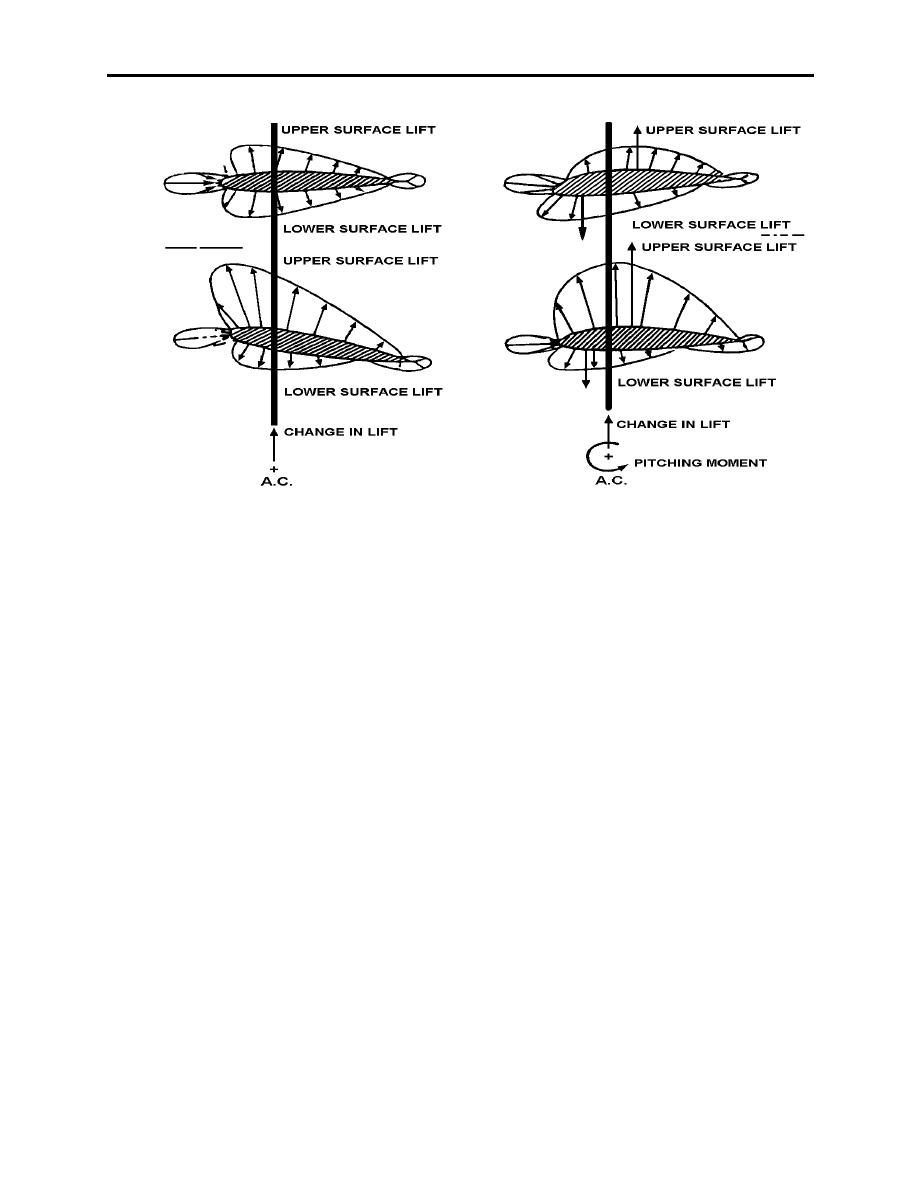 |
|||
|
|
|||
|
|
|||
| ||||||||||
|
|  CHAPTER 2
HELICOPTER AERODYNAMICS WORKBOOK
Figure 2-9
On nonsymmetrical airfoils, the center of pressure of upper and lower surfaces do not act
directly opposite each other, and a pitching moment is produced. As the AOA changes, the
location of the distributed pressures on the airfoil also changes. The net center of pressure (sum
of upper and lower) moves forward as AOA increases and aft as AOA decreases, producing
pitching moments. This characteristic makes the center of pressure difficult to use in
aerodynamic analysis. Since the moment produced about the aerodynamic center remains
constant for pre-stall AOA, it is used to analyze airfoil performance with lift and drag
coefficients.
Pitching moments are an important consideration for airfoil selection. Torsional loads are
created on the blades of positively cambered airfoils due to the nose down pitching moment
produced during increased AOA. These torsional loads must be absorbed by the blades and
flight control components, and initially this resulted in structural blade failure and excessive
nose-down pitching at high speeds. Early helicopter engineers consequently chose symmetrical
airfoils for initial designs, but have since developed cambered blades and components with high
load-bearing capacity and fatigue life.
For the TH-57, rotor blade designers combined the most desirable characteristics of
symmetrical and nonsymmetrical blades, resulting in the "droop-snoot" design (figure 2-10).
This incorporates a symmetrical blade and a nonsymmetrical "nose" by simply lowering the nose
of the blade. The resulting blade performance characteristics include low pitching moments and
high stall AOA the retreating blade. The significance of this second characteristic will be
covered in chapter 3.
2-8 ROTOR BLADE AERODYNAMICS
|
|
Privacy Statement - Press Release - Copyright Information. - Contact Us |